


ex and the City 2 is a racist, orientalist mess.

Set in Abu Dhabi, the movie features our aging, profoundly white heroines frolicking around sand dunes, riding camels, and meeting sheiks while shrieking about magic carpets and balghas. But there’s one scene I’ve never been able to scrub from my brain: After Samantha incites an angry mob by causing public outrage with her shameless, smoldering sexuality (or insensitivity to religious beliefs and customs), she is saved by a group of women in modest clothing. The women, in full niqabs, lead Samantha and the other girls to the back room of a shop, where they unveil to reveal stunning designer clothes, gorgeous hair, and perfect makeup.
The scene struck me, as a non-binary Arab-American, knowing that in much of the SWANA region there simply isn’t an option to wear clothing outside of gendered expectations. So, for those who might be between male and female, there’s no safe way to express yourself through fashion, other than in private. Somehow, the scene gets at an underrepresented, layered truth familiar—perhaps by necessity—to many SWANA people: That your outer expression doesn’t have to define you, that you can find power in the private versions of yourself.
With that in mind, we asked five people from across the SWANA region and diaspora to show us who they are—as their full selves—in private, and tell us how the customs where they live (and have lived) shape their everyday performance of gender. — RAMZY MASRI

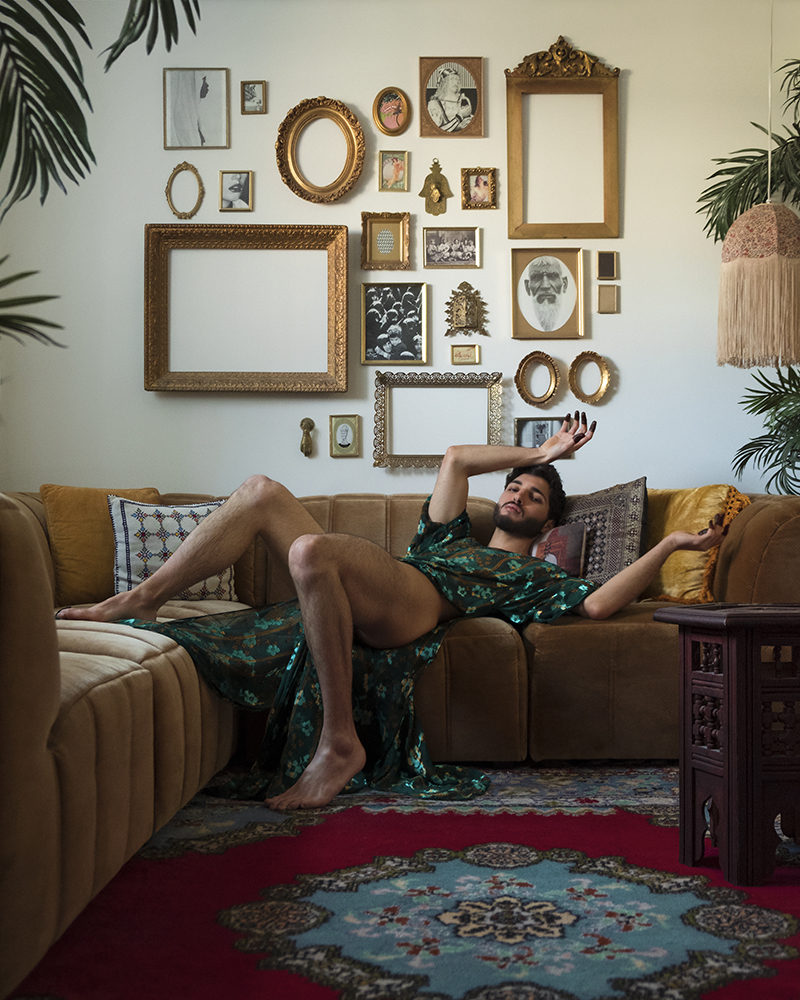
Mehdi Bahmad
Queer Moroccan singer-songwriter, performer and visual artist based in Montreal Canada.
How is your public identity different from your private identity, if at all?
My work allows me to magnify, express, and celebrate my identity. I often refer to my artistic persona as the “public” one: He’s unattainable, bolder, and definitely more unapologetic. This psychological distinction helps me a lot. In my day-to-day life, I’m a pretty simple guy, but the essence remains the same.
How has your journey with gender and sexuality impacted your work?
My work is largely influenced by both my Moroccan roots and my journey with gender and sexuality. Within my art, I think it mostly expresses itself through gender attribution of cultural symbols that I’ve always perceived as universal, unisex, and as appealing on a man, a woman, and everyone in between. For as long as I can remember, gender roles and separation always felt extremely wrong and unnatural to me. The world I created is the expression of a more fluid and inclusive culture. For me, it’s very important to respect traditions, but also to be able to evolve with our own time and address real contemporary challenges. I want to reappropriate my culture and propose a new narrative in which everyone belongs and feels welcome.

Ahmed Elfares
Exotic sub, gay bottom, born and raised in Egypt, currently living in Vancouver, BC.
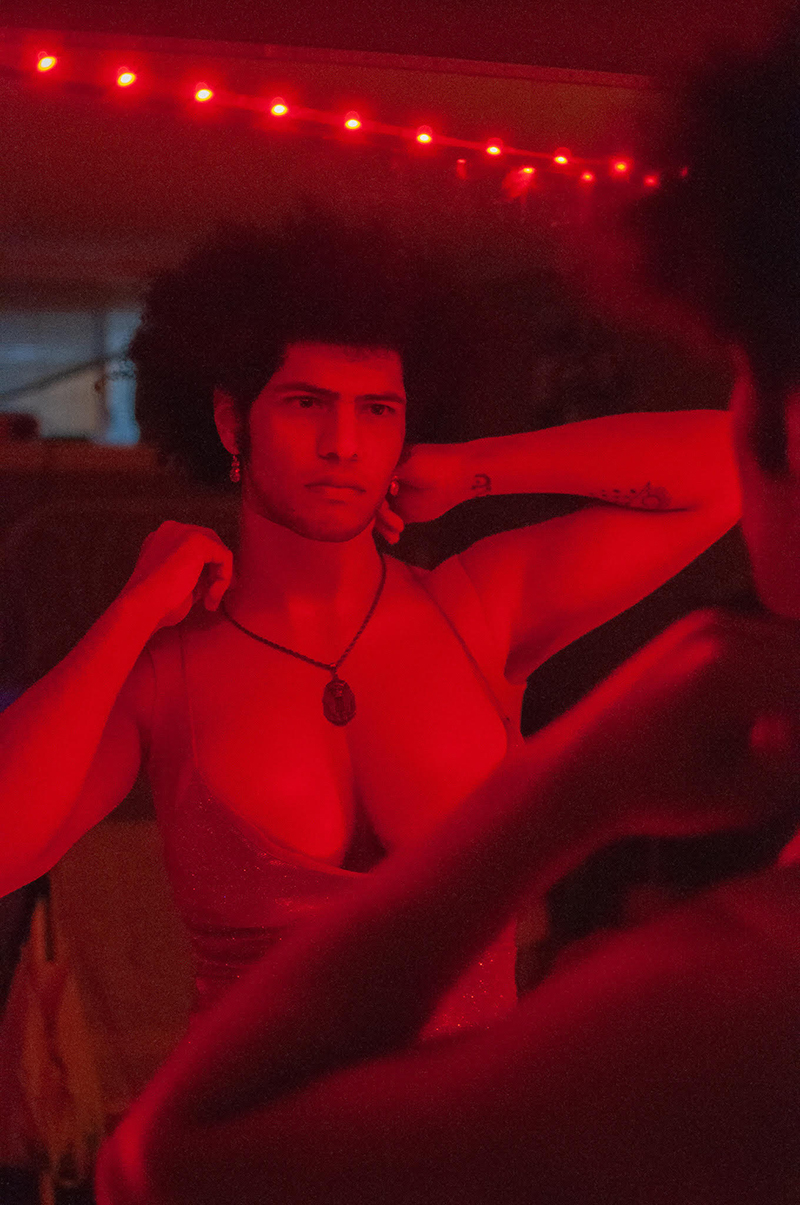
Does the place you live (or places you’ve lived in the past) influence how you’re able to express yourself?
100%. Growing up closeted in a traditional Egyptian family, going to conversion therapy, having my entire life censored by my homophobic mother, and getting abandoned in a foreign country after years of suffering made me angry, oppressed, cautious, scared, and has built the activist in me. I would have never been working on my projects, or have had the intense urge to make change, if I didn’t live knowing that millions of kids around the world go through what I went through as a kid; being gay/misfit. Only a year ago, when I was 19, I thought my life was over. I didn’t want the big houses, the maid staff, or the financial stability. I wanted a hug, a friend, and a family. I was privileged enough to have that, and have had an insanely blessed year. It felt like I was reborn. Going through so many different types of trauma allowed me to be a safe space for so many people around the world. Yes, I’m not fully at peace with myself. But, I still take pride in what I do and the impact I very thankfully have had on a lot of people of different ages. It cost me so much, but there is no other way I could’ve wanted my life to roll out.
How has your journey with gender and sexuality impacted your work?
It made me more adaptable and fake, but not in a bad way. I can fit into any environment. I can shine bright, or shut up. I can sit back and watch a game with a room full of white hetero folks, join a cook off with the Upper West Side rich moms, or belly dance the night away with BIPOC queer folks. It allowed me to make any way my way. It eliminated my ability to reject a situation, or be scared of anything/anyone.

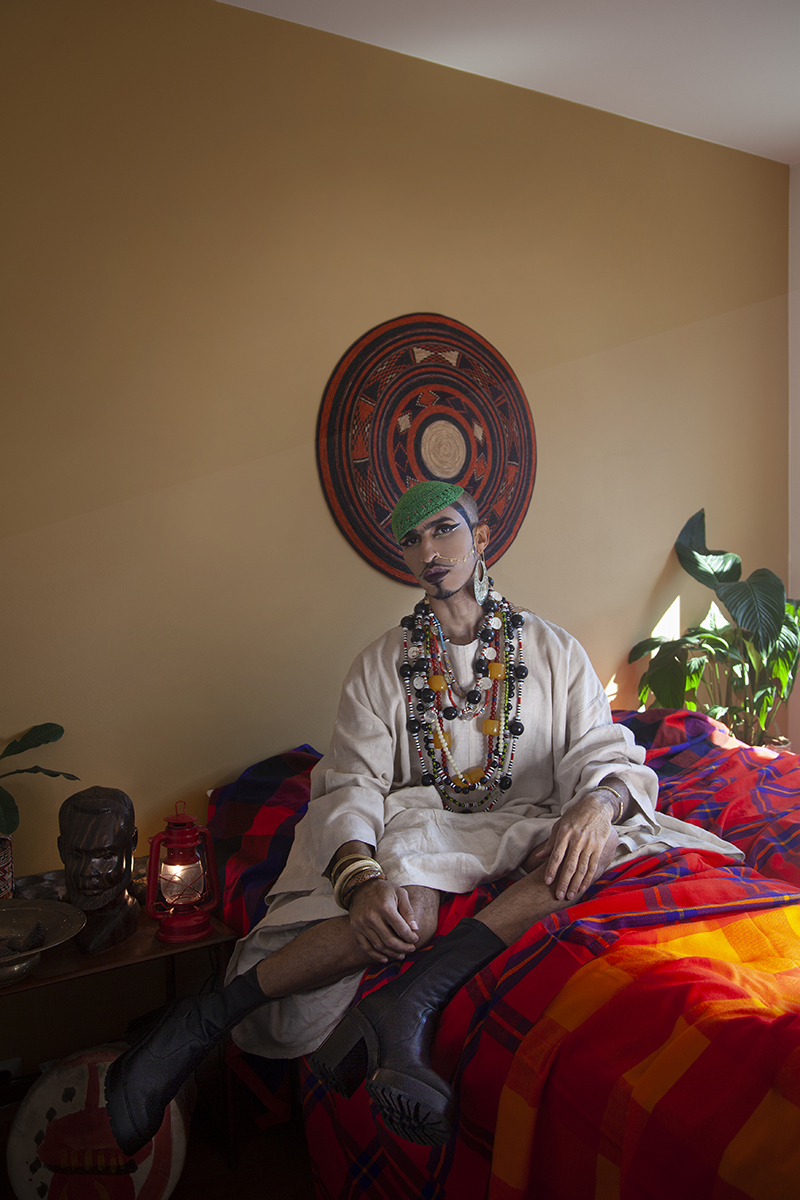
Ahmed Umar
Non-binary Sudanese visual artist/artivist living in Oslo, Norway.
Does the place you live (or places you’ve lived in the past) influence how you’re able to express yourself?
I navigated my path between three contradicting cultures. I grew up between Mecca, Saudi Arabia, and Sudan and have spent the last third of my life in Norway. I present myself as a Sudanese human, picking inspirations from both male and female aesthetics, and I'm able to fully express my creations in Norway. I take great pleasure in being out of the traditional or social frames.
How has your journey with gender and sexuality impacted your work?
I'm a visual storyteller. My narratives are strongly informed by the themes of my upbringing and the experiences of living within a society structured around religion. I recreate my own life story in an attempt to explore the complex relationship between identity, authority, sexuality, depression, and art. I claim my space and work against the demonising and the silencing of LGBTQI+ voices in my society.

Shekamara
Queer, North African stylist and media student.
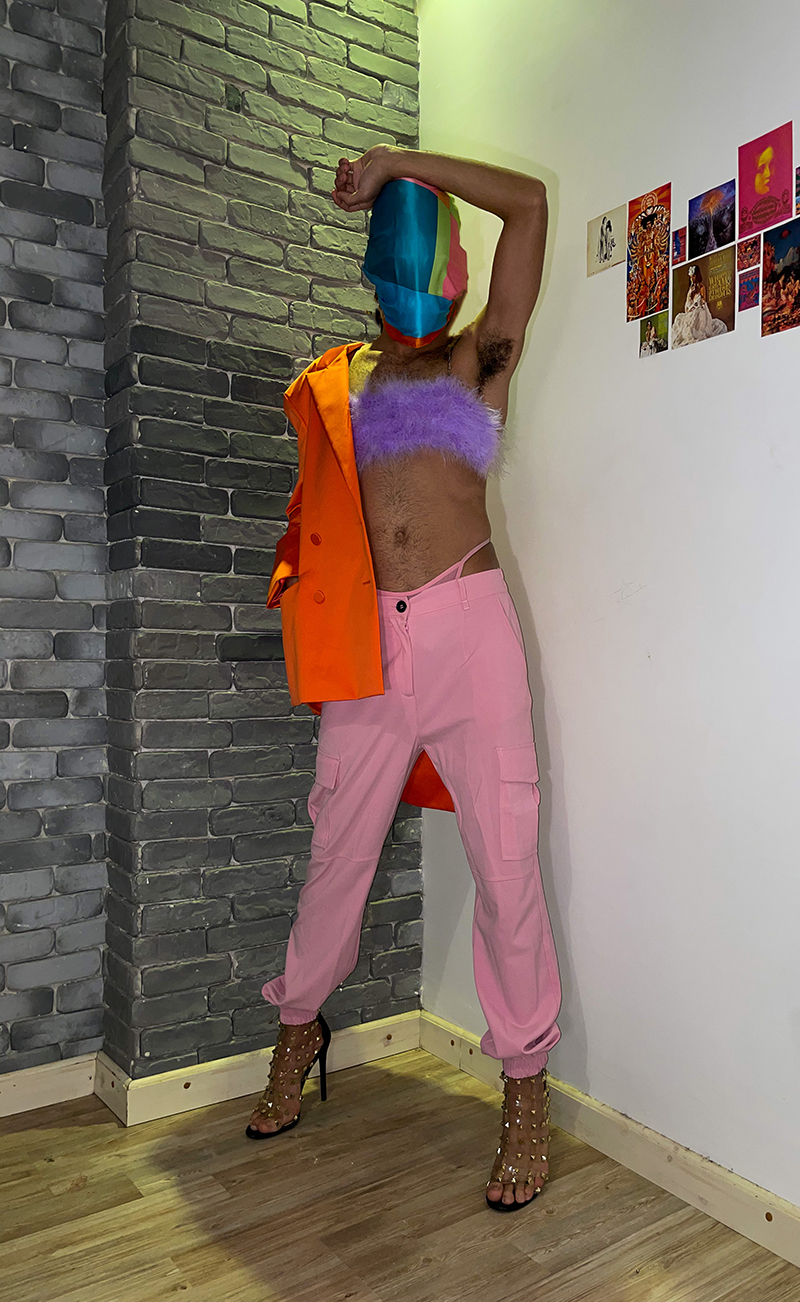
Does the place you live (or places you’ve lived in the past) influence how you’re able to express yourself?
Yes. 100%. Especially being born and raised in a rural city 200 km away from a capital that is very traditional, I didn’t have that much space to express any identity and frankly, I didn’t have any space to grow any identity at all. It was more of one mold that we all had to fit in, so when I moved to the capital, I literally had an explosion of conflicting identities to the extent that for my first three years in Cairo, I had changed five friend groups and almost looked like a different person every year and the only thing that was common between these looks was my hair.
How has your journey with gender and sexuality impacted your work?
My journey with gender and sexuality has definitely made me more socially aware about the struggles of minorities and marginalized groups. As someone who studies media, that made me lean more towards documenting their struggles. I don’t get to portray and document the struggles of anyone but women, since you can’t talk about sexual or religious minorities in my country, which made it an outlet that I put all my anger and sadness towards. So, most of my recent work is tackling women’s rights and sexual harassment in my country.

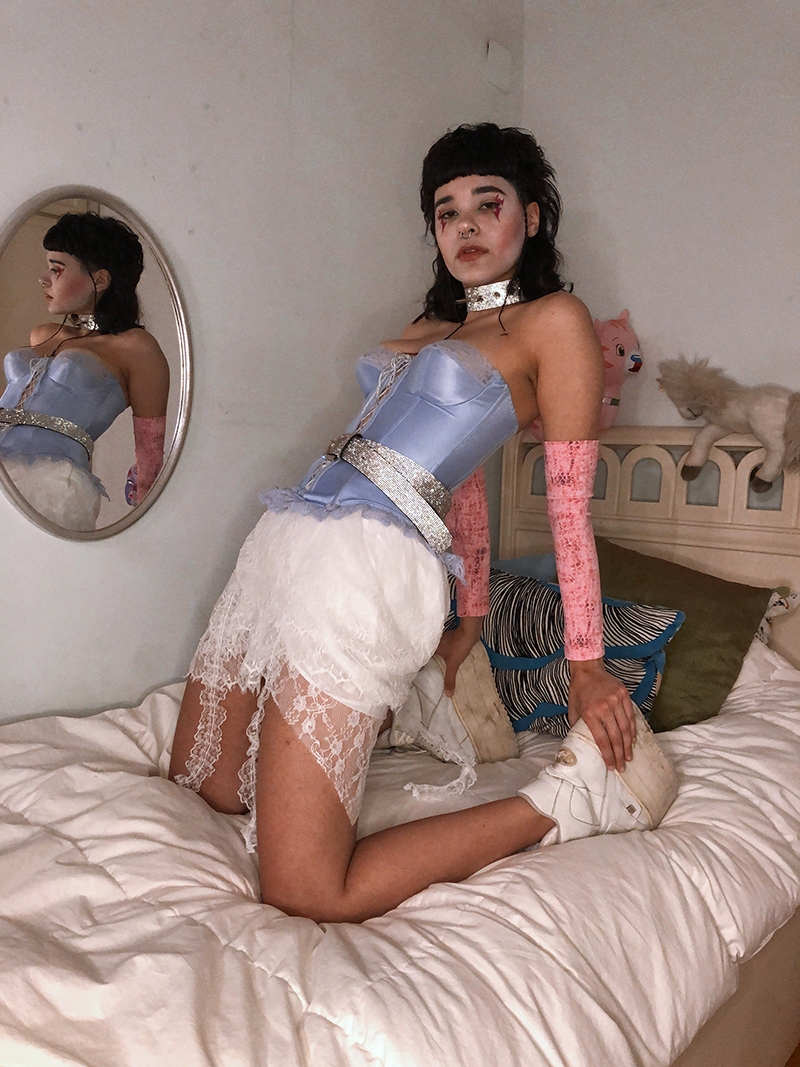
Jannah Emam / Juno
Egyptian musician/singer and visual artist that’s based in Cairo, Egypt.
How is your public identity different from your private identity, if at all?
Over the years of me coming to terms with my peculiar self, I found it to be a priority for me to express and embrace myself for who I am. Of course, living in Egypt restricts me from my freedom all the time, but being surrounded by a community of like-minded people who accept you and make you feel safe has made living here a lot easier for me. So in some way, I have to be a more acceptable/presentable version of myself in public, but that does not necessarily stop me from continuing my journey in living an authentic life.
How has your journey with gender and sexuality impacted your work?
I’m still at the beginning of exploring and understanding my gender and sexuality, but I have found that pushing gender norms and not conforming to what society ascribes me to has given me a sense of strength and liberty to look beyond the horizons that are placed upon me.




